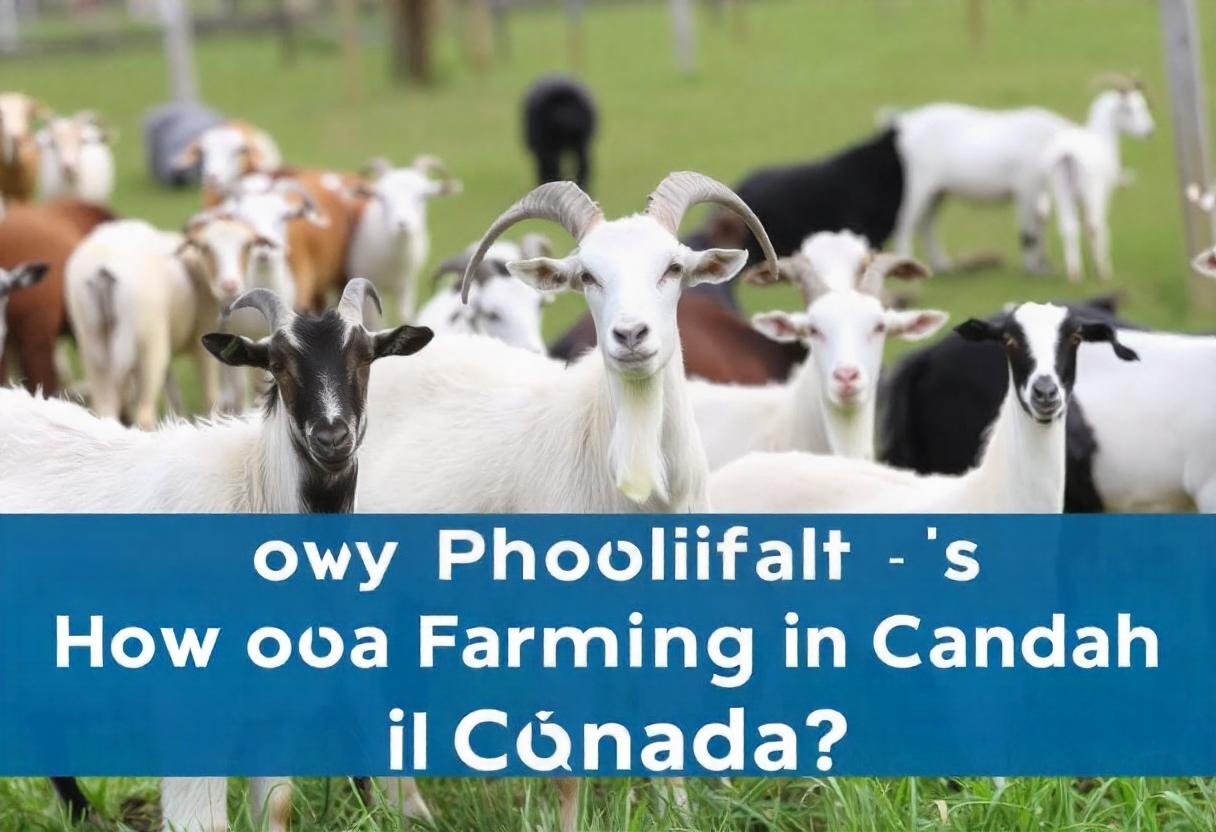
Goat farming in Canada is a niche sector within the agricultural industry that has seen growth in recent years due to increasing consumer interest in goat meat, dairy products, and other goat-derived products. While it may not be as large as traditional cattle or grain farming, goat farming offers several profitable opportunities. This article explores the profitability of goat farming in Canada, including the factors that influence profitability, market opportunities, and challenges faced by goat farmers.
Overview of Goat Farming in Canada
Goat farming in Canada is diverse, with operations ranging from small-scale hobby farms to larger commercial enterprises. Goats are raised primarily for their meat (chevon), milk, and fiber, with some farms also producing specialty products such as goat cheese, soap, and wool. The Canadian goat industry has grown due to increasing consumer demand for these products and the advantages goats offer in terms of land use and adaptability.
Key Factors Influencing Profitability
1. Market Demand
The demand for goat meat and dairy products has been rising in Canada, driven by consumer interest in alternative proteins, ethnic cuisines, and health-conscious diets. Goat meat is leaner than beef and pork, which makes it appealing to health-conscious consumers. Goat cheese and milk are also valued for their distinct flavors and potential health benefits. However, market demand can vary regionally, and producers may need to identify and target specific consumer bases to maximize profitability.
2. Cost of Production
The cost of raising goats includes expenses for feed, housing, veterinary care, and equipment. Compared to cattle, goats are relatively low-maintenance, as they require less space and can graze on a variety of vegetation. However, initial setup costs, such as fencing and shelter, can be significant. Farmers must also consider the costs associated with breeding, which can impact overall profitability. Efficient management practices, such as rotational grazing and proper nutrition, can help reduce production costs and improve profitability.
3. Farm Size and Scale
The profitability of goat farming often depends on the scale of operation. Smaller farms may struggle with profitability due to higher per-unit costs, while larger farms can benefit from economies of scale. Larger operations may also have better access to processing facilities and marketing channels. However, managing a larger farm requires more labor and resources, and farmers need to ensure they can handle the increased scale without compromising animal welfare or product quality.
4. Regional Factors
Geographic location plays a significant role in goat farming profitability. Areas with suitable grazing land and favorable climate conditions are more conducive to successful goat farming. In Canada, regions such as Ontario, Quebec, and British Columbia have seen growth in goat farming due to their diverse climates and established markets. Farmers in these regions may benefit from proximity to urban centers and access to specialty markets.
5. Value-Added Products
Adding value to goat products can significantly enhance profitability. Goat cheese, for example, can command higher prices compared to raw milk. Farmers who produce specialty products, such as goat milk soap or artisanal cheeses, can tap into niche markets and achieve higher profit margins. Diversifying product offerings and developing a strong brand can help farmers capture a larger share of the market and increase overall profitability.
Challenges Faced by Goat Farmers
Despite the potential for profitability, goat farmers face several challenges:
- Market Fluctuations: Prices for goat meat and dairy products can fluctuate based on market conditions, consumer demand, and competition. Farmers need to stay informed about market trends and be prepared to adapt their strategies to maintain profitability.
- Disease Management: Goats are susceptible to various diseases and parasites, which can impact health and productivity. Regular veterinary care and biosecurity measures are essential to prevent and manage health issues, which can otherwise lead to increased costs and reduced profitability.
- Regulatory Compliance: Compliance with agricultural regulations, including animal welfare standards and food safety requirements, is crucial. Farmers must ensure they meet all regulatory requirements to avoid fines and maintain their market access.
Future Prospects for Goat Farming
The future of goat farming in Canada looks promising, with several factors contributing to potential profitability:
- Growing Consumer Demand: Increased consumer interest in goat products, driven by health and dietary trends, offers opportunities for growth. Farmers who can effectively market their products and meet consumer preferences will likely benefit from expanding demand.
- Innovation and Research: Advances in breeding techniques, nutrition, and disease management are likely to improve productivity and profitability. Ongoing research and innovation will help farmers optimize their operations and enhance the quality of their products.
- Sustainability: Goats are relatively low-impact animals compared to larger livestock, making them an attractive option for sustainable farming practices. Emphasizing environmental stewardship and sustainable practices can appeal to eco-conscious consumers and open up new market opportunities.
Goat farming in Canada presents a profitable opportunity for those willing to invest in the sector. The profitability of goat farming depends on various factors, including market demand, cost of production, farm size, and regional conditions. While challenges exist, such as market fluctuations and disease management, the potential for success is significant, especially for farmers who focus on value-added products and innovative practices.
As consumer preferences continue to evolve and new technologies emerge, goat farming is poised for growth. With careful planning, effective management, and a focus on quality and sustainability, Canadian goat farmers can achieve long-term profitability and contribute to the diverse landscape of Canadian agriculture.